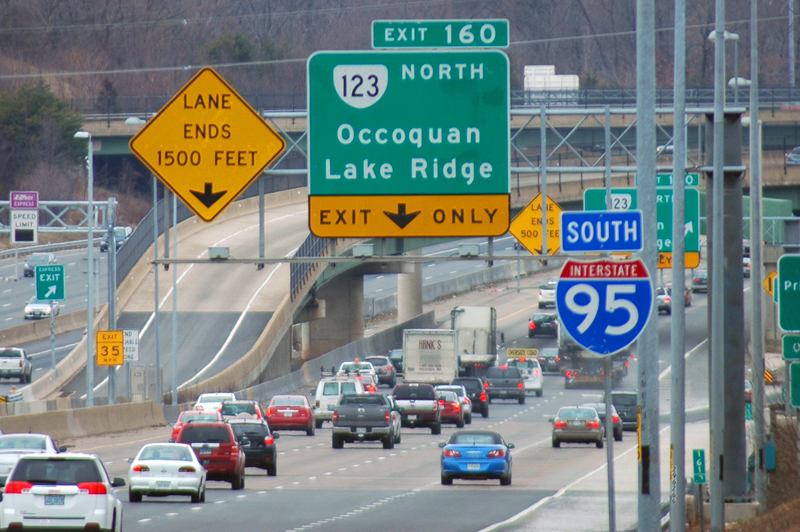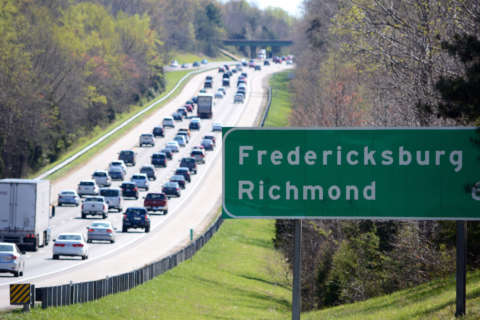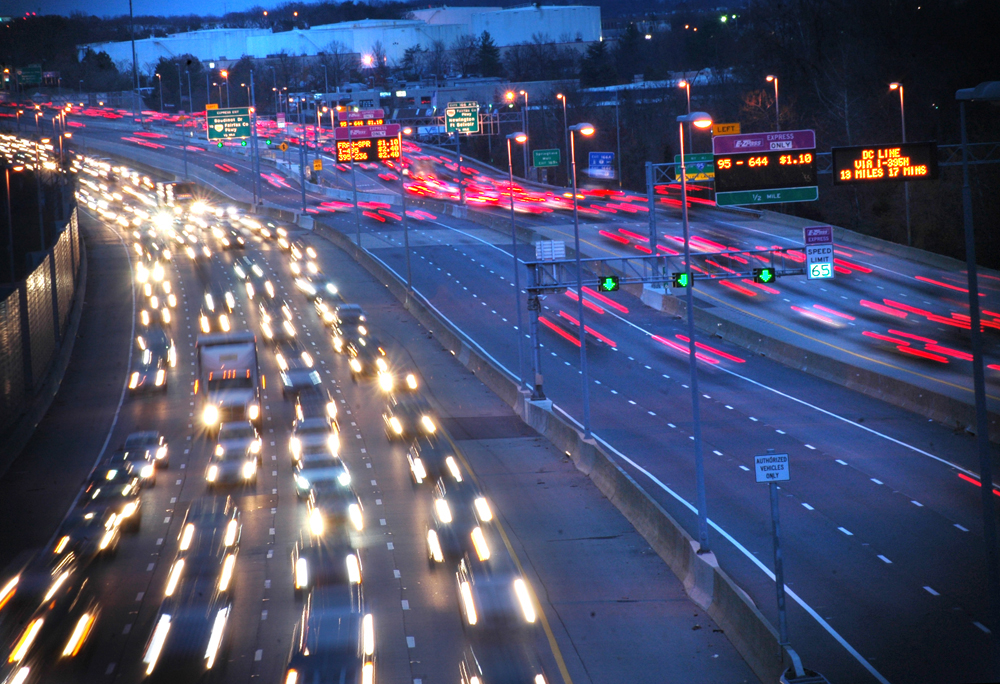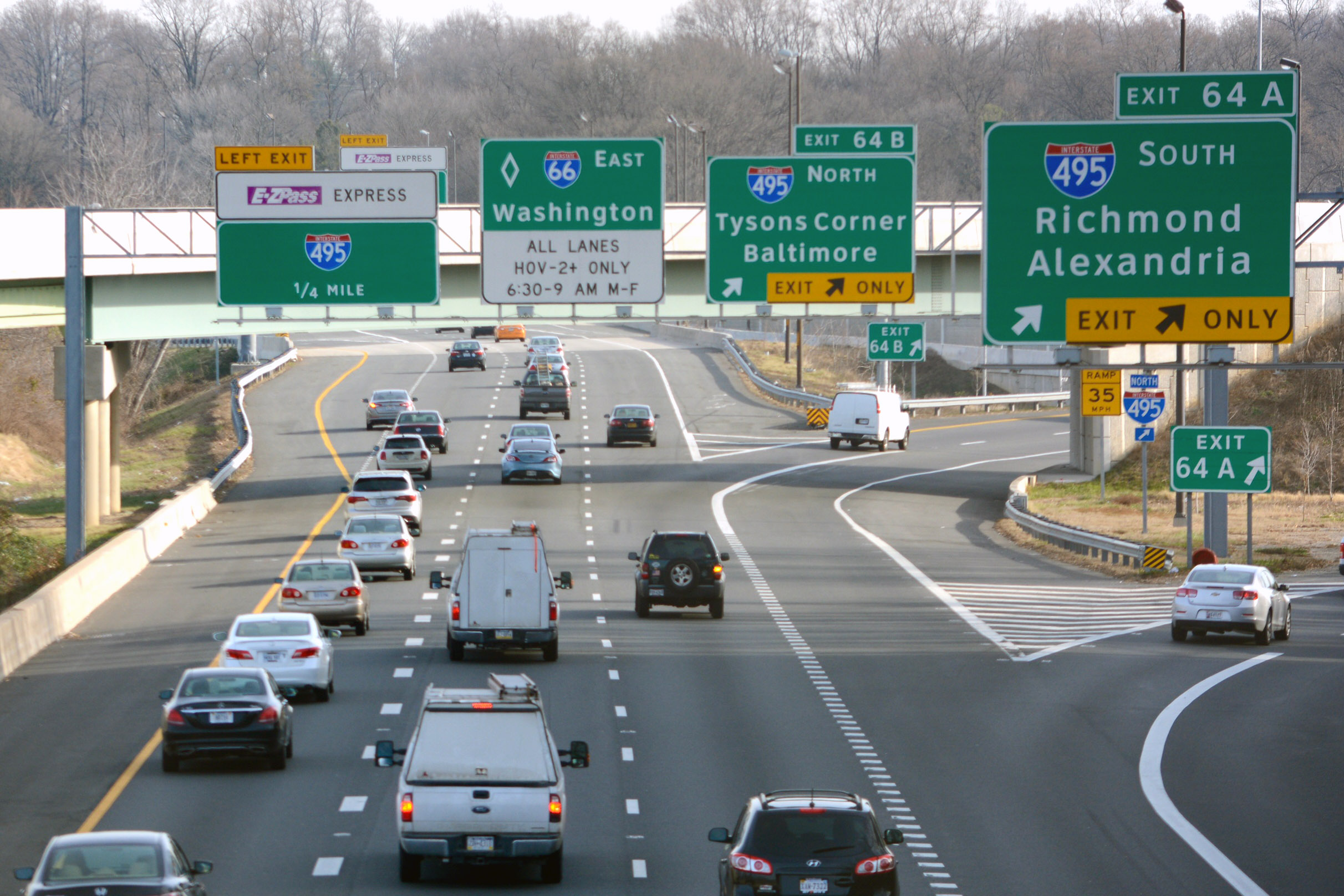
The traffic jams over the Occoquan are so much worse than on any other part of Interstate 95 in Virginia that they throw off the scale of a review of potential traffic improvements for I-95 from North Carolina to the Potomac River.
Initial analysis ahead of public meetings this week to identify the Virginia trouble spots shows people spend more than 1.2 million hours a year in delays in just the 1-mile southbound stretch over the Occoquan River. The miles leading up to that are only slightly better, regularly slowed to around 30 mph.
Overall, at least 70% of delays are consistent and recurring, state data show, rather than due to crashes. Weekends are frequently as bad as weekdays, with little assurance of how long a trip might take.
In the big picture, southbound travel is generally significantly worse than northbound, but changes like the military’s Base Realignment and Closure (BRAC) plan have added to “reverse commute” issues near places such as Fort Belvoir.
The I-95 Corridor Improvement Plan meetings offering an opportunity to highlight other problems that need to be addressed are scheduled Thursday night at South County Middle School in Lorton and next Tuesday at James Monroe High School in Fredericksburg. The meetings are scheduled from 6 p.m. to 8 p.m. There is also an online survey.
While the meetings are preliminary, state transportation officials have identified the locations with the most consistent delays, most frequent crashes, and most frequent lane closures due to crashes or other incidents.
“There are many, many more problems on the 95 corridor than there are resources to try to address them, even when we’re focusing on just the top 25% of areas,” Virginia Deputy Transportation Secretary Nick Donohue said.
The information, combined with traffic data confirming the heavy rush-hour traffic that builds from the Fredericksburg area up through the Springfield interchange, is meant to help identify the areas where solutions are most desperately needed.
“The harder work starts which is, ‘OK, why is this happening?’ And then what can we do to seek to address this?” Donohue said.
Unlike a similar plan on Interstate 81 completed last year, the I-95 plan may not have specific recommendations this fall to address each of the worst problem spot.
“On the 95 corridor, because there’s external partners we may need to engage — whether that’s Amtrak, VRE, Transurban or others — it may take time; and some of our recommendations may ultimately be: In this area we need to study this concept more,” Donohue said.
Transurban owns and operates the 95 Express Lanes, with a contract that can sometimes stand in the way of certain other improvements.
Still, fixes could focus on I-95 itself, Route 1 improvements to handle overflow traffic when there are crashes, commuter buses, or freight and passenger rail upgrades beyond those already planned.
“This is the one corridor in Virginia that literally has everything,” Donohue said.
So many people are carpooling, slugging or taking transit in the corridor during rush hour already that at the busiest point — near the Springfield interchange — state transportation officials believe the majority of people moving through that stretch at rush hour are not driving alone.
Trip data showing a large number of people funneling up onto Interstate 395 on weekends, as well, suggests VRE service could be successful if the system is able to add weekend trains in the future, Donohue said.
Another option likely to be considered is the addition of “red X” shoulder lanes on I-95 that could open up to effectively widen the road at rush hour or when there are major delays.
The plan is not expected to include additional tolling proposals, and could be funded partially using new interstate funding tied to this year’s I-81 bill and partially using other regional, state or federal funding sources. It is expected to include operations improvements, such as improved tow truck availability, roadside assistance and communication with drivers.
The state’s analysis over the next few months will also attempt to project the effects of ongoing construction projects due to be completed in the corridor over the next three to four years in order to determine whether some issues are being addressed or other problem spots are about to pop up.
“We have several billion dollars’ worth of work underway,” Donohue said.
That includes the extension of the 95 Express Lanes south to Fredericksburg, new bridges over the Rappahannock River, and ongoing interchange upgrades in the Stafford area.
The new bridges are meant to address the heavy local traffic between Route 3 and Route 17 in Fredericksburg.
Just south of the Occoquan River, a new auxiliary lane between Route 123 and the Prince William Parkway is expected to be completed in late 2022. While it will not end the lane drop that plays a major role in the backup at the river, it could help ease merging and weaving delays.







